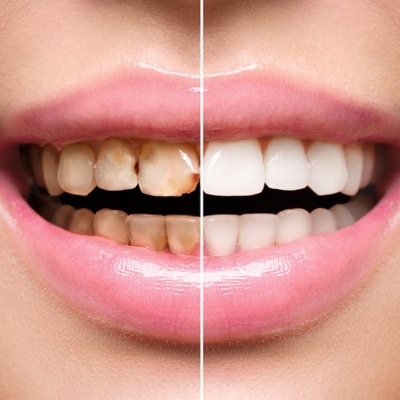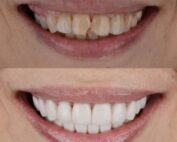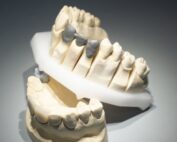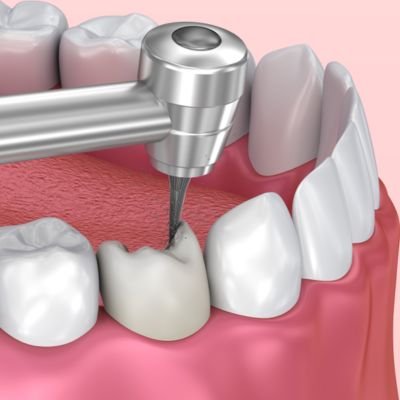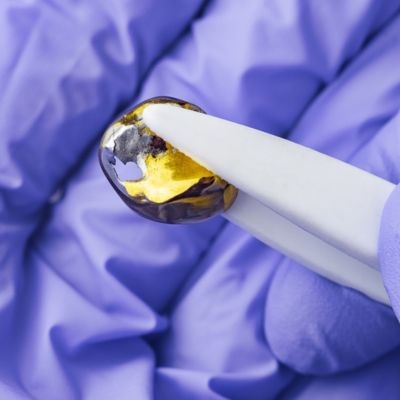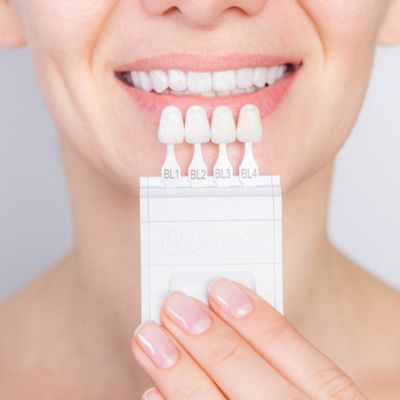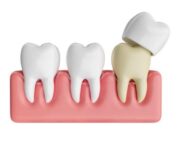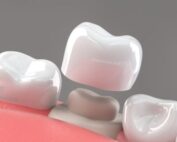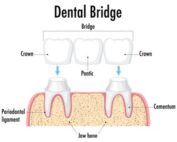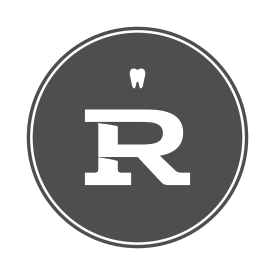News + Articles
What does a dental crown look like?
A dental crown is designed to look just like your natural tooth in shape, color, and shine. Most people can’t tell the difference.
If your dentist recommended a crown, you’re probably wondering: what does it actually look like? Will it blend in? Will anyone notice when I smile?
The good news is that modern crowns are crafted to mimic natural missing teeth, from their translucent, enamel-like surfaces to a seamless gumline fit.
Whether it’s on a front tooth or a back molar, a well-designed crown blends into your smile like a custom glove.
In this guide, we’ll show you what dental crowns look like on various teeth. We’ll explain how materials such as porcelain, zirconia, and metal change their looks.
This guide helps you see what your new crown could look like. Whether you’re planning treatment or just exploring, it shows how close you can get to natural perfection.
How a Crown Fits Into Your Tooth Structure
To understand how a dental crown restores your smile, it helps to know how your tooth is built and how a crown fits on top of it.
Each tooth has layers: the hard enamel, softer dentin beneath it, and the inner pulp. Below the gumline, the root is protected by cementum and anchored into the jawbone by the periodontal ligament.
When a crown is placed, the visible part of your natural tooth (called the anatomical crown) is gently reshaped into a smaller core. The new dental crown is then crafted to fit over this prepared tooth precisely.
Your dentist designs it to match the shape, height, and contact points of your original tooth. It must align perfectly with your bite, gums, and surrounding teeth, so that it looks and feels completely natural.
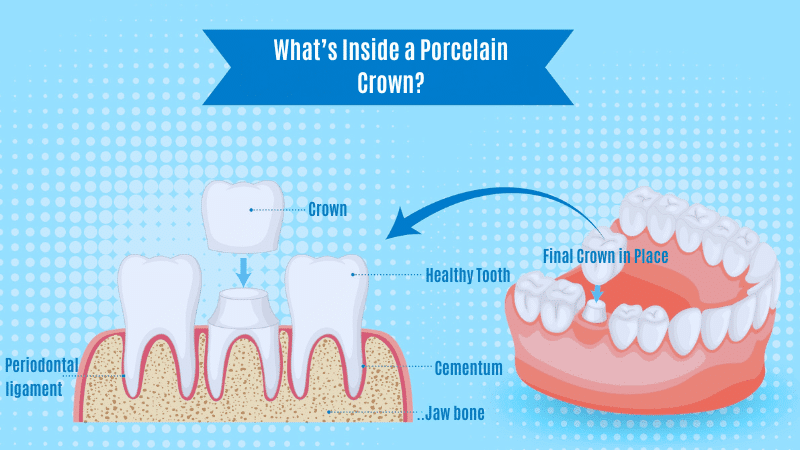
Types of Crowns and What They Look Like
Every type of dental crown is designed with a purpose. Some crowns focus on strength. Others are made to look as natural as possible. Your dentist will help you choose based on where the crown goes and how you want it to look.
Below, you’ll see how different crown materials appear in the mouth, so you know what to expect before your treatment starts.
Porcelain Crowns
Best for: Front teeth
Look: Smooth, tooth-colored, and highly natural.
Aesthetic Rating: ⭐⭐⭐⭐⭐
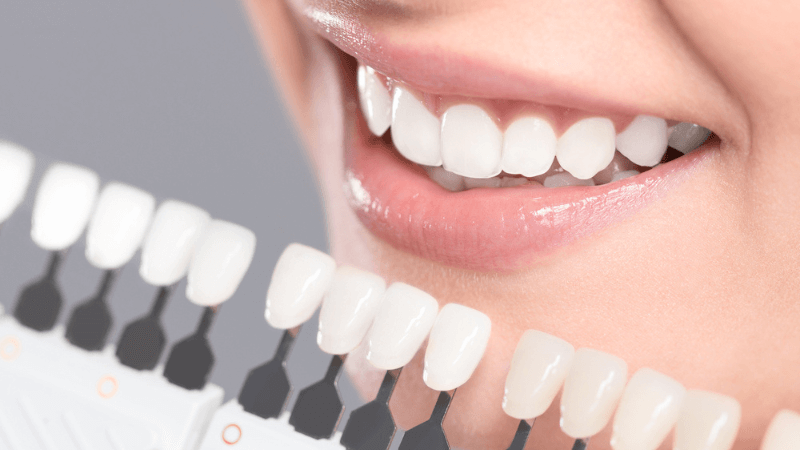
Porcelain crowns are a popular choice for their natural appearance and ability to mimic the translucency of real teeth.
Shape and Size:
These crowns are custom-shaped to replicate the natural contours of adjacent incisors and canines.
Dental technicians can fine-tune the mesial and distal angles, incisal edge, and facial curvature to achieve a seamless anatomical match.
Color and Translucency:
Porcelain crowns offer excellent translucency and color layering. They reflect light like enamel, allowing for subtle shade matching (e.g., Vita shade A1–C2) and natural-looking depth.
✅ Tip: A great choice if you care most about appearance and don’t have heavy biting force in the area.
Zirconia Crowns
Best for: Any tooth (especially back molars).
Look: White and strong, slightly more matte than porcelain.
Aesthetic Rating: ⭐⭐⭐⭐☆
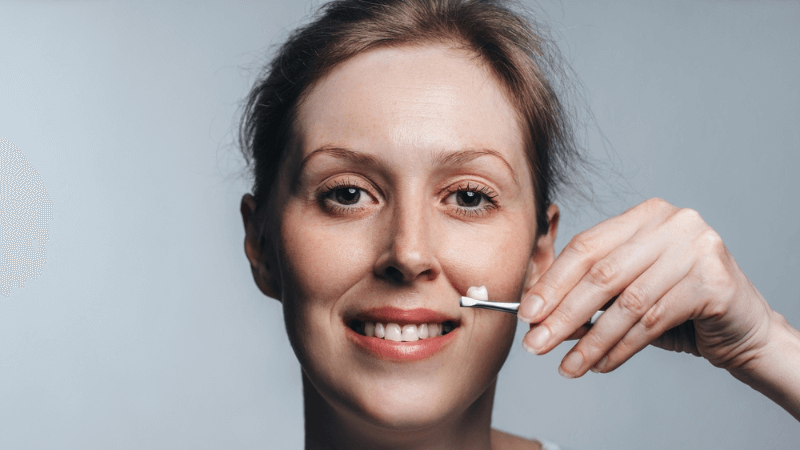
Zirconia crowns are ideal for high-pressure areas like the back teeth due to their exceptional strength and longevity.
Shape and Size:
Zirconia crowns, fabricated using CAD/CAM technology, deliver exceptional accuracy in cusp height and occlusal anatomy.
Compared to traditional porcelain, zirconia is notably thinner, yet stronger and more resilient to bite forces.
Color and Translucency:
Solid zirconia is more opaque, presenting a uniform white tone. Newer variations, like layered zirconia, improve aesthetics by mimicking natural enamel with subtle color gradients.
✅ Tip: If you grind your teeth or have strong bite pressure, zirconia gives you confidence without sacrificing looks.
Metal Crowns
Best for: Back molars
Look: Shiny silver or gold, very noticeable.
Aesthetic Rating: ⭐⭐☆☆☆
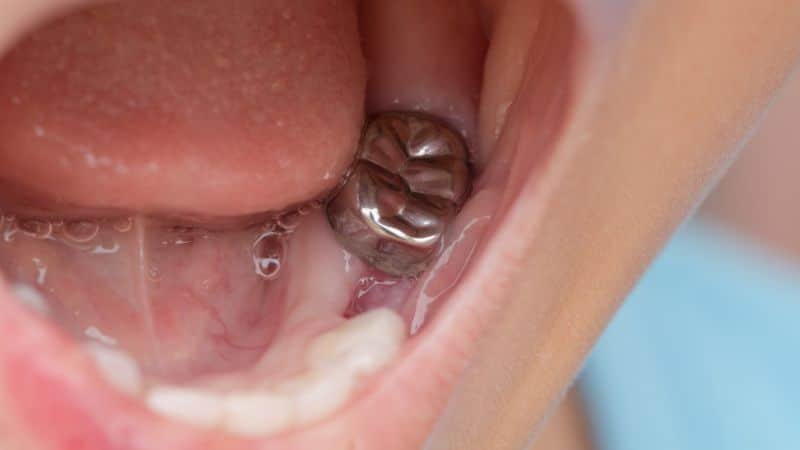
Metal crowns, typically made from gold alloy or base metals, prioritize longevity and biocompatibility.
Shape and Size:
At just 0.5 mm thick, they help preserve more of the natural tooth and fit comfortably in areas with limited bite space, making them ideal for tight molar regions.
Color and Translucency:
Metal crowns have a metallic hue, either yellow (gold alloy) or silver (palladium, nickel-chromium), with no translucency, which makes them less natural-looking compared to ceramic options.
✅ Tip: If you care more about function than looks and want something that lasts, metal crowns work great for molars.
PFM Crowns (Porcelain-Fused-to-Metal)
Best for: Molars or premolars
Look: Tooth-colored with possible dark gumline.
Aesthetic Rating: ⭐⭐⭐☆☆
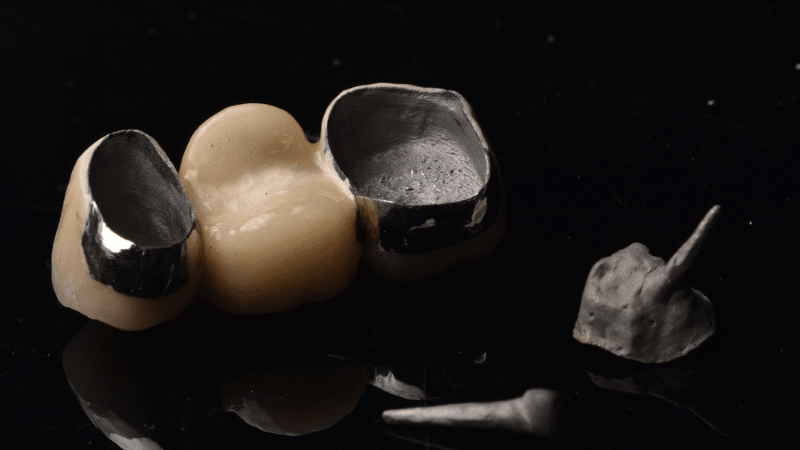
PFM crowns offer a balanced solution—combining the strength of a metal core with porcelain layers that replicate the natural translucency and color of real teeth.
Shape and Size:
Due to the dual-layer structure, PFM crowns require slightly more tooth reduction, typically 1.5–2.0 mm.
Color and Translucency:
The porcelain topcoat offers a decent enamel-like look. However, the metal beneath can sometimes cast a grayish shadow at the gumline, limiting translucency compared to full-ceramic options.
✅ Tip: Great if you want a balance of strength and aesthetics, but don’t mind a slight color mismatch at the base.
EMAX Crowns
Best for: Front teeth or premolars
Look: Translucent, smooth, and highly natural.
Aesthetic Rating: ⭐⭐⭐⭐⭐
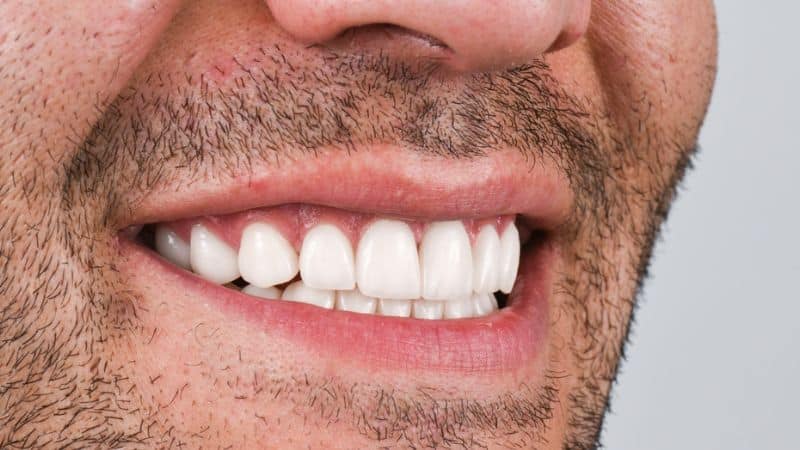
EMAX crowns are made from lithium disilicate ceramic, offering high-end esthetics and balanced strength.
Shape and Size:
Thanks to precise milling from glass-ceramic blocks, they offer realistic tooth contours with minimal thickness (as low as 1 mm), helping preserve your natural tooth.
Color and Translucency:
Their light-reflective properties and layered shades mimic real enamel, creating a natural-looking smile with depth and brightness.
✅ Tip: If your crown is in a visible spot and you want a flawless smile, EMAX is often the top choice.
Resin Crowns (Temporary)
Best for: Short-term use before a permanent crown.
Look: Basic shape, less glossy, slightly bulkier.
Aesthetic Rating: ⭐⭐☆☆☆

Resin crowns serve as interim restorations while the permanent crown is being fabricated.
Shape and Size: Typically pre-formed and adjusted chairside, resulting in bulkier contours and flatter cusps.
Color and Translucency: Available in generic A/B shades, but lacking in translucency and fine shading. Their plastic appearance may not blend well in visible zones.
✅ Tip: Resin crowns are temporary, so don’t expect a perfect fit or color match. Their purpose is protection, not aesthetics.
Not sure which crown is right for you? Let’s help you decide → [Schedule Consultation]
Dental Crown Procedure: Step by Step
Step 1: We examine your tooth.
We check for decayed teeth, damaged teeth, broken teeth, or weakened tooth structure. If the damage can’t be fixed with a filling, a crown offers the best long-term protection.
Step 2: We shape your tooth.
We gently reshape your tooth into a smaller core, called a stump. At this stage, the tooth may look like a short peg, slightly yellow in color, ready to receive your crown.
Step 3: We take a digital impression.
We take a 3D digital scan of your teeth. This ensures your crown matches your bite, alignment, and smile shape perfectly.
Step 4: You get a temporary crown.
A temporary resin crown is placed to protect your prepared tooth. It helps you eat and speak normally while the lab crafts your permanent crown, typically within 1–2 weeks.
Step 5: We place your permanent crown.
Once your crown is ready, we place it using strong dental cement. Then we check your bite, gum fit, and contact points to make sure everything feels natural.
Step 6: We guide you on dental care.
With daily brushing, flossing, and regular check-ups, your crown can last 10–15 years or more.
What Does a Temporary Dental Crown Look Like?
Temporary crowns are typically made from resin or acrylic. They’re shaped to cover your tooth and protect it while your permanent crown is custom-crafted at a dental lab.
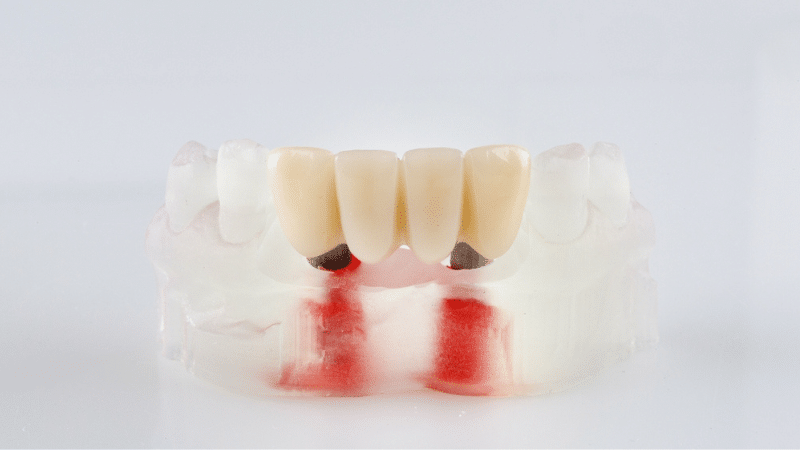
It may appear slightly duller or less glossy than the rest of your smile. The shape isn’t always perfect, but it still protects your tooth and lets you speak and chew without discomfort.
Temporary crowns are only worn for a short time, usually 1 to 2 weeks.
Feature | Temporary | Permanent |
Shine | Low | Glossy |
Color match | Slightly off | Perfect match |
Shape | May feel bulky | Custom fit |
Now that you understand how the dental crown procedure works, let’s take a closer look at real-life results through our before-and-after smile gallery.
Dental Crowns: Before and After Smile Gallery
Image Front Teeth Crowns Before and After
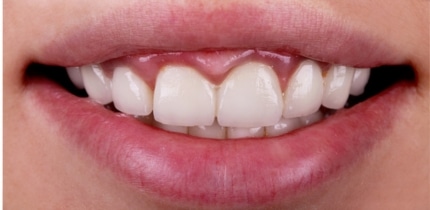
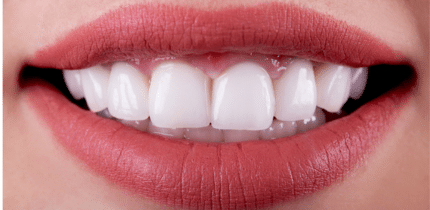
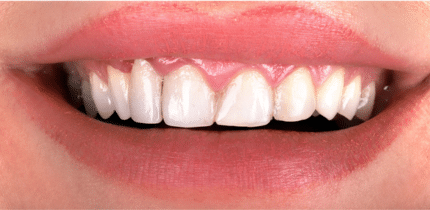
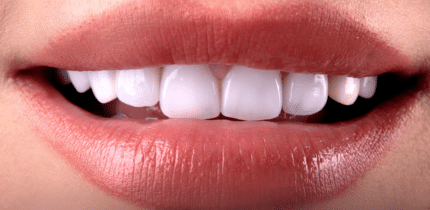
Bottom teeth crowns before and after
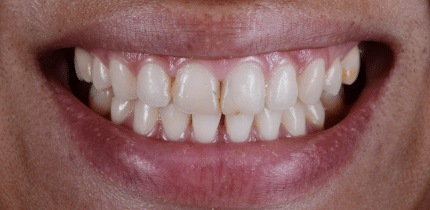
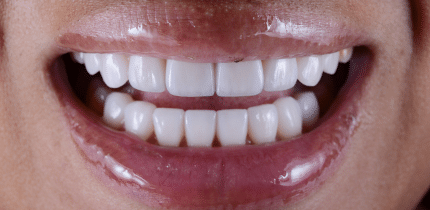

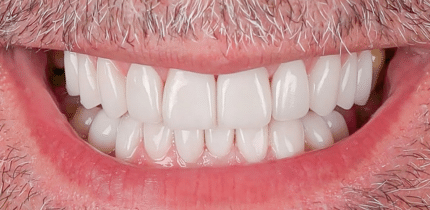
Full mouth crowns before and after
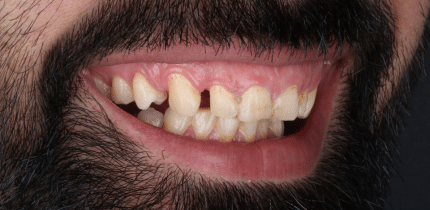
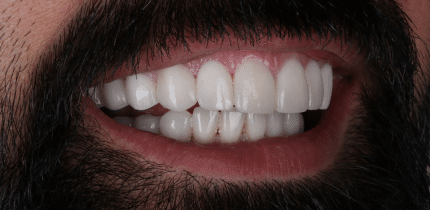
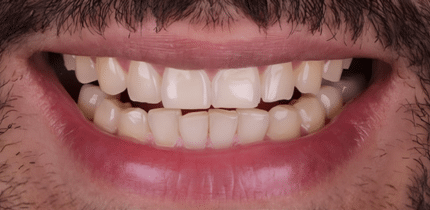
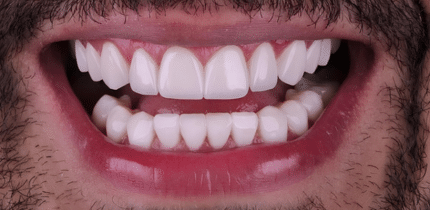
Porcelain crowns before and after
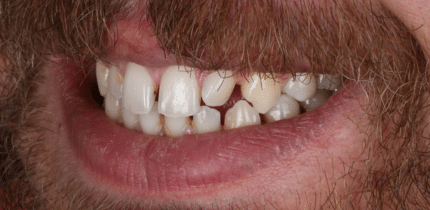

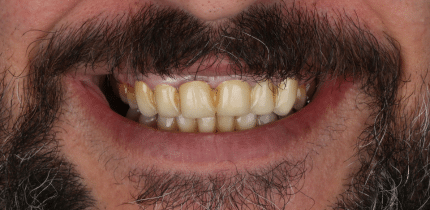
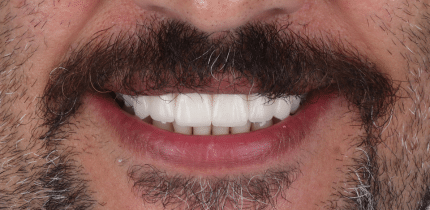
What Makes a Dental Crown Look Natural?
Tooth Shape and Contour
Your crown is shaped to recreate the natural curves and height of your original tooth. We also check the teeth that touch it when you bite both above and beside to make sure everything feels balanced and natural.
Color Matching
We use a professional shade guide to match your crown with the tone and translucency of your existing teeth.
Materials like porcelain mimic the way enamel reflects light, so even under bright lights or in photos, the crown blends in flawlessly.
Shine and Surface Texture
A quality crown has a smooth, glossy surface just like a real tooth. We replicate the fine surface textures that help it catch and reflect light naturally, avoiding the dull, plastic look that some crowns have.
Fit Along the Gum Line
A precise fit at the gumline is essential. If the crown sits too high or feels bulky, it can irritate your gums or create an unnatural transition. A snug fit ensures comfort and makes the crown visually seamless with the rest of your smile.
Full Smile Harmony
We design your crown with your entire smile in mind. That means matching not just the tooth next door and opposing teeth, but also the shade, shape, and bite alignment. When done right, your crown disappears into your smile even up close.
What Does Gum Look Like After Porcelain Crowns?
A natural-looking crown isn’t just about the tooth; your gums matter too. Healthy gums should fit smoothly around the base of the crown.
This creates a clean, seamless look when you smile. If the crown fits well, your gums will appear pink, even, and tight against the tooth.
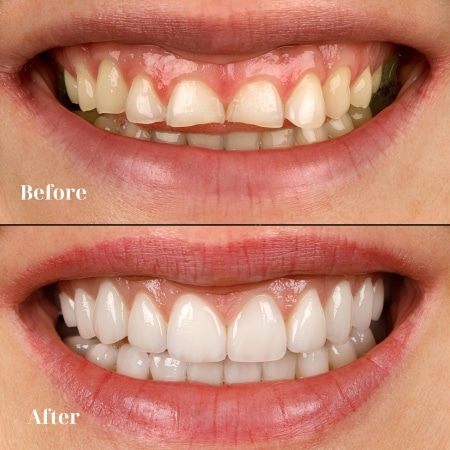
Here’s how healthy gums should appear once your crown is placed:
✅ No visible gray or dark line at the gumline (common with older PFM crowns).
✅ Gums are pink, firm, and not inflamed or swollen.
✅ No ledges or gaps where food or bacteria can accumulate.
✅ The transition from gum to crown surface is smooth and symmetrical.
Frequently Asked Questions
What’s inside a dental crown?
The inside of a crown is hollow and smooth, shaped to fit securely over your trimmed tooth.
Can others see my dental crown when I smile?
Most crowns are virtually impossible to spot, even up close, when properly placed.
What if my crown looks too big?
If your crown feels too big, it may be due to bite misalignment or marginal overcontour. Your dentist can adjust the shape for better comfort and appearance.
What changes will I see right after getting a dental crown?
You may notice a subtle bite change as your mouth adjusts. Visually, the crown should blend in seamlessly with your smile.
Can dental crowns improve my bite and chewing?
Yes, dental crowns can restore chewing ability and stabilize your bite, especially when covering back teeth.
Contact Us: Best Dentist in Orange, CA
Are you considering a dental crown or dental implants? Do you have questions about the procedure? Please schedule a consultation with our dentistry office today.
Our team will create a custom plan for you to give you a confident, healthy smile that you’ll be proud to show off!

Dr. Ronald Pham, DDS, is a Doctor of Dental Surgery who graduated from the USC Ostrow School of Dentistry in 2015. With over 8 years of experience in restorative dentistry, including dental implants, crowns, bridges, fillings, root canals…
Dr. Pham has restored the smiles of +2,000 patients and is committed to providing professional dental care focused on patient comfort. He achieves this by combining a welcoming space and state-of-the-art dental technology.
Book Your Appointment Now
Related Articles

Guaranteed Smiles!
As a premiere dentist office in Orange CA, we will always make sure that your experience is memorable, friendly, and professional. We strive to meet your highest expectations in every way imaginable, from your very first interaction with our office staff, to the quality of treatment you receive. We don’t take our patients’ trust for granted, and will promise to over-deliver with your best interest in mind. So give us a call today, and experience our first-class service!
Insurance
Accepted
We proudly accept most dental insurance plans, and welcome cash patients as well. Call us today for more information.
$199
Special
New to our dental office? Take advantage of our New Patient special offer with x-rays, exam, and full report of findings.
Extended
Hours
Do you have an emergency? Need to see us a little later or earlier? Let us know. We can be flexible to meet your busy schedule!

